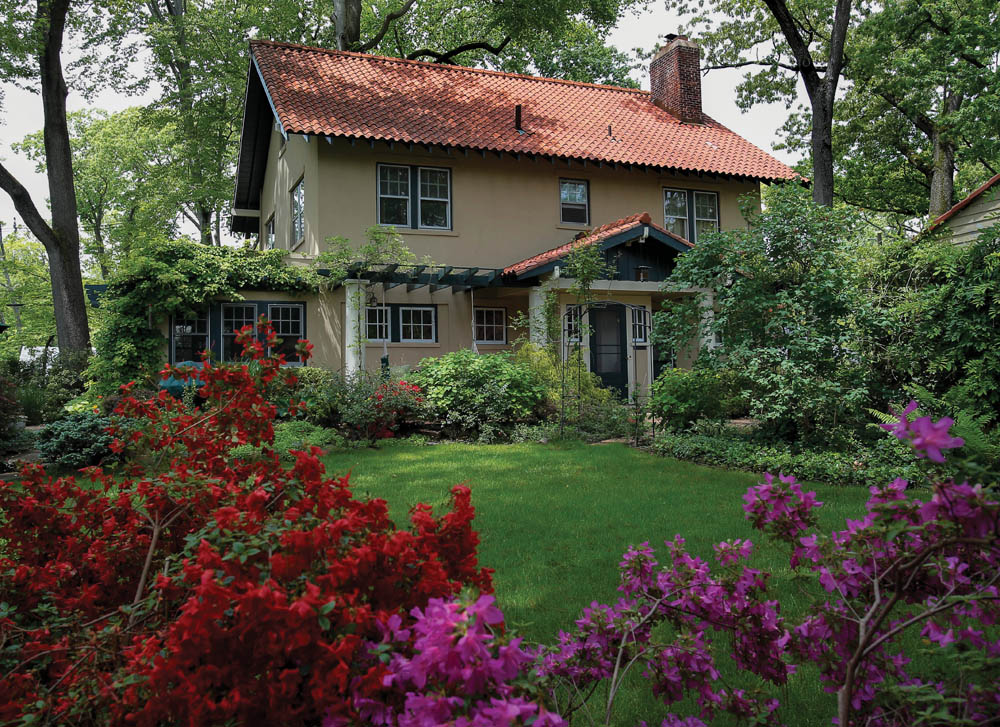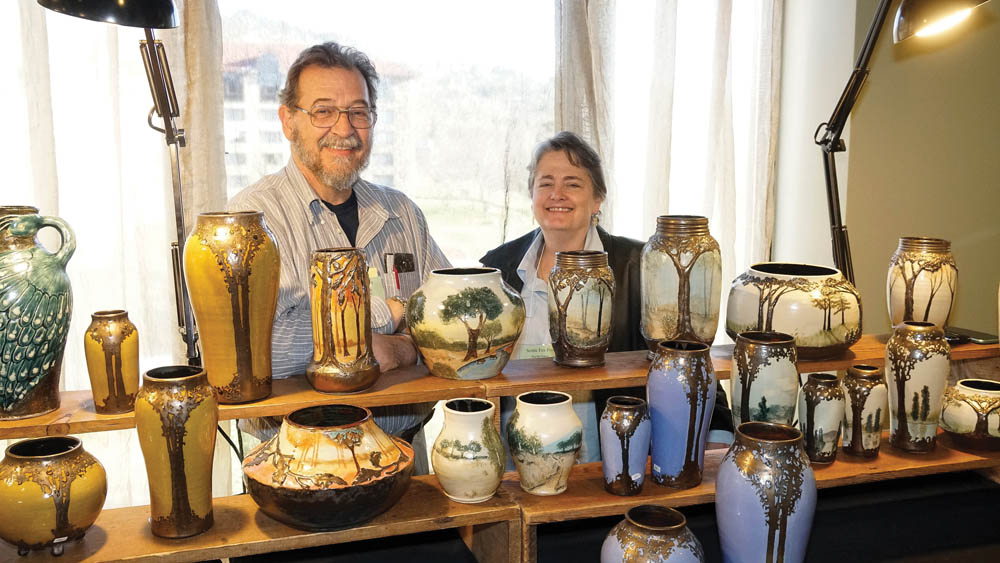
“Craftsman House No. 104” from Ray Stubblebine’s photography book Stickley’s Craftsman Homes. Located in Oradell, New Jersey, the home was made of Natco Hollow Tile Block with a tile roof. House plan published by Gustav Stickley in December 1910, home built in 1911.
Asheville’s Omni Grove Park Inn will convene the 37th National Arts and Crafts Conference in mid February. The heritage event celebrates the movement of the same name, featuring an unsurpassed antiques show and a contemporary-crafts exhibition. Conference Director Kate Nixon notes that a new room in the contemporary show will highlight North Carolina makers.
“It’s essential for our attendees and supporters to realize the rich history of artisans utilizing resources in the state,” says Nixon. Hands-on local craftsmanship is a major tenet of the movement, begun 150 years ago with few signs of fading.
The conference also hosts seminars covering furniture, ceramics, architecture, the printing arts, and more. Among the national lecturers is Ray Stubblebine, who spoke at the inaugural event and will return after nearly two decades to deliver his talk “Stickley’s Craftsman Homes and the People Who Built Them.” Stubblebine — an author, speaker, and award-winning photojournalist — is a leading expert on Gustav Stickley, an early-20th-century tastemaker. “He was the preeminent Arts & Crafts voice in America,” says Stubblebine.

In 1901, Stickley launched The Craftsman magazine to promote the movement’s philosophy — a manifold reaction against industrialization, cheap production values, and Victorian frippery — as well as to advertise the furniture his factory produced. “Two years later,” says Stubblebine, “he announced the ‘Home Builders Club’ in his magazine, and in 1904, any subscriber was eligible to receive a free set of house plans for homes featured in the magazine. He’d roll up the plans, put them in a tube, and you’d get them in in the mail. Then you could contract with a builder to build the home, with no need to hire an architect.”
By the time the magazine ceased publication in 1916, Craftsman homes had been constructed all across America. In 2006, in an effort to preserve and promote Stickley’s creative legacy, Stubblebine published Stickley’s Craftsman Homes — a 500-page book with photos and information gleaned from many years of research. A new, updated edition will publish this winter.
His passion for the architectural subgenera was ignited when he and his wife Ulana Ilnytzky, who collect Stickley furniture together, purchased an original Stickley home in New Jersey that they lived in for 35 years while meticulously restoring it. Listed on the National Register of Historic Places, it is one of 242 known examples of authentic Craftsman homes in the Stickley mode, as distinguished from the countless examples of Arts & Crafts-style homes, including the popular bungalows, that proliferated from Stickley’s innovative design.
Wide roof overhangs, deep covered porches, sharp gables, earthy colors, and one-level or story-and-a-half layouts all indicate the Arts & Crafts style. However, “recognizing a true Stickley house is a lot harder,” says Stubblebine. The signature heavy eaves are usually supported by purlins — a horizontal element — rather than the A&C vertical bracketing that became a decorative hallmark. The placement and abundance of windows is another clue.
Even in a row of similar houses, an authentic Stickley still stands out, says Stubblebine. “It has some kind of presence that makes you look twice.”
“The American Arts and Crafts Movement now appeals to a new generation who are inspired by its natural elements,” notes Nixon. She mentions the “exquisite, museum-quality examples of Bungalow- and Craftsman-style work” at the conference, “reflecting interiors inspired by the natural world.”
The 37th National Arts & Crafts Conference & Shows happens Friday, Feb. 16 through Sunday, Feb. 18, at the Omni Grove Park Inn (290 Macon Ave., Asheville) with the Arts & Crafts Era Antiques show, the Arts & Crafts Contemporary Artisans Show, and the Books & More Show. Ray Stubblebine’s seminar, “Stickley’s Craftsman Homes and the People Who Built Them,” will be Friday, Feb. 16, 9pm. For more information on shows, seminars, the annual Arts & Crafts Historic Home Tour, and more, visit arts-craftsconference.com.
